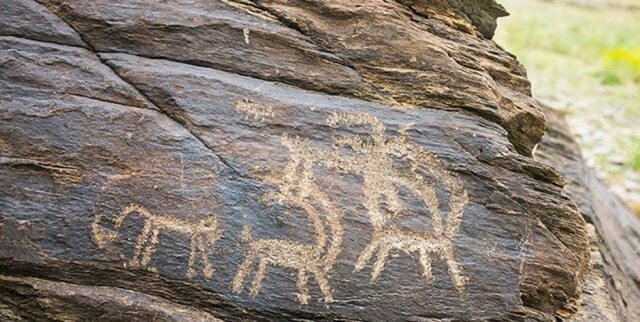Ancient rock-carved motifs constitute open-air museum in west-central Iran

TEHRAN – A new survey by Iranian cultural heritage experts and officials has shed new light on hundreds of ancient rock-carved motifs, which are scattered near Maryanaj, constituting an open-air museum across west-central Iranian town.
“These rock carvings are situated near a road that crosses Doost-Ali Valley of the town of Maryanaj in Hamedan province and they have already been in this area. Fortunately, during the visit of the experts, it was determined that they were not harmed [drastically],” ISNA quoted deputy provincial tourism chief as saying on Tuesday.
“We are mulling over if we can transfer the rock-carved arts into a museum in such a way that does not inflict harm to them,” Ahmad Torabi said.
“Another option is that the rock-carved objects to remain in their original place to preserve their cultural values. Moreover, they are situated along a touristic road and if they are placed at a museum they might lose their unique charm.”
“These objects are called ‘shepherd motifs’, which are in the shape of scratches [on the surface] in various themes and motifs such as animals, plants, and geometric patterns,” he explained.
Noting that such motifs can be seen all over the Zagros highlands, he added “Unfortunately, human interventions destroy the artifacts more than natural erosion.”
Known in classical times as Ecbatana, Hamedan was one of the ancient world’s greatest cities. It was the capital of Media and subsequently a summer residence of the Achaemenian kings who ruled Persia from 553 to 330 BC. Ali Sadr cave, Ganjnameh inscriptions, Avicenna Mausoleum, Hegmataneh hill, Alaviyan dome, Jameh mosque, and St. Stephanos Gregorian Church are amongst Hamedan’s attractions to name a few.
AFM/MG

Leave a Comment